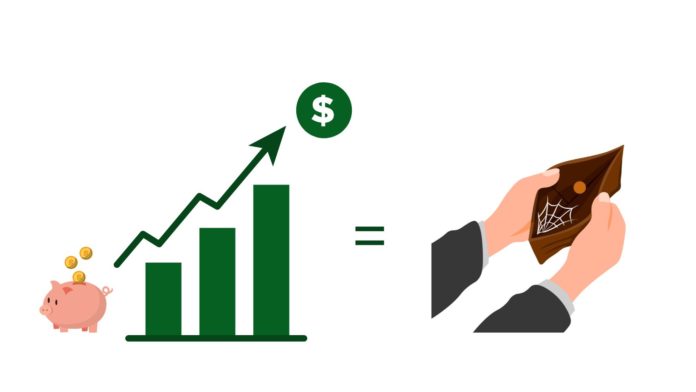As inflation and interest rates continue to climb across the country, what does it actually mean and how is it affecting the wallets of students and Canadians as a whole?
According to Statistics Canada, the country’s Consumer Price Index (CPI) was at 6.3 per cent in December 2022, a decrease from 6.8 per cent in November 2022. Meanwhile, the Bank of Canada raised its key interest rate on Jan.25 to 4.5 per cent as it tries to grapple with high inflation.
Herb Emery, an economics professor at the University of New Brunswick, wrote in an email to The Aquinian that CPI is a measure symbolic of how expensive it is to buy a basket of goods and services for the average person.
“The inflation rate is the percentage increase in the CPI or the rate of increase in the level of prices,” he wrote.
“Even if we go to zero per cent increase in the CPI, then cost of living is still permanently higher and if our incomes haven’t increased at the same rate, then we can afford fewer goods and services — the purchasing power of our income is reduced.”
Larry Sheppard, a part-time business professor at St. Thomas University and investment advisor at the Royal Bank of Canada (RBC), said a 6.3 per cent inflation means living expenses that would have cost $100 a year ago now costs $106.03.
“This whole group has their costs going up, but their revenue or their incomes are not,” he said.
Inflation occurs when the demand for goods and services is greater than the supply, meaning industries elevate their prices while clients compete.
“Essentially, inflation comes about when you have more demand for goods and services than what there is to supply,” said Sheppard.
According to Emery, other factors influence Canada’s inflation rates, such as rising energy costs and international conflicts, like the Russian invasion of Ukraine.
He said federal government spending to support Ukraine had an impact as well.
“The price inflation that we have experienced is coming from disruptions to supply chains (goods from China) and oil and gas prices from the conflict in Ukraine,” wrote Emery in an email.
Despite this, the report from Statistics Canada states that consumers paid 13.1 per cent less for gasoline and fuel in December 2022, the largest monthly decline in fuel prices since April 2020.
Sheppard said inflation is a large challenge as prices for basics like food, rent and utilities have all increased. He said this makes things more difficult for those who work lower-wage jobs.
“Being very conscious about spending, budgeting and trying to buy things on sale are the best things to look into,” said Sheppard.
“You wish there was a magic answer, but there isn’t.”

